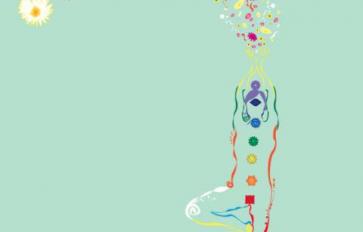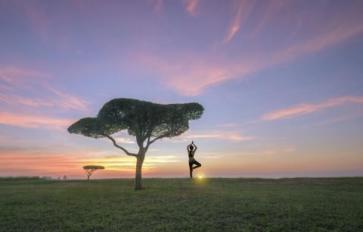
Let your heaviness be what grounds you.
There was a moment during yoga teacher training when I thought to myself, “how can I be a yoga teacher while sad?” I felt fear about teaching others as I still have some negative patterns of my own. Then I remembered—this is a practice.
Most people seek deeper connection—to their bodies, God, or loved ones. I seek the same. Mainstream marketing portrays yoga as this thing one does to become happy. Open any yoga magazine and pictures of beautiful smiling faces in perfect postures appear atop cliffs with serene backdrops of blue oceans. This marketing gives the illusion that those who practice yoga are or will become perfect, skinny, and happy. This is not the goal of yoga. It is a deep misunderstanding and projection of empty Western values.
When I first began practice, I showed up to my mat with a head full of thoughts. Why am I here? What’s the point? As we eased into the postures the teacher said, “let your heaviness be what grounds you.” It was one of the most important cues for me to hear as a student. This not only acknowledged my sadness, but invited it to be part of practice as a tool.
One of the misunderstandings about having a spiritual practice is that it will make one happy. Although I probably have lifetimes of practice to go, what I’ve learned so far is that practice doesn’t make me “not sad.” It does, however, make me aware of when I begin a series of thought patterns that spiral into sadness. With meditation and yoga, I’ve learned to pay attention to the second I begin these thoughts. I acknowledge they are present, and I choose not to form a story about the ways in which the world and my world are doomed and despaired.
I practice letting go of the expectation to attain and instead, simply show up. Some days might feel pointless and other days the practice might elicit feelings of ecstasy. Neither are important. What is important is to show up – consistently – and pay attention. The expectation to become happy with practice is like a musician practicing their instrument and expecting to compose a hit each time. It’s unattainable and this expectation will almost always leave one unfulfilled. The patterns one can notice from showing up to a mindfulness practice with some consistency are more impressive and, perhaps, greater than the fleeting feeling of happiness we often seek.
Photo Credit: "Yoga" by Eli Bessa by CC BY 2.0








